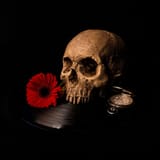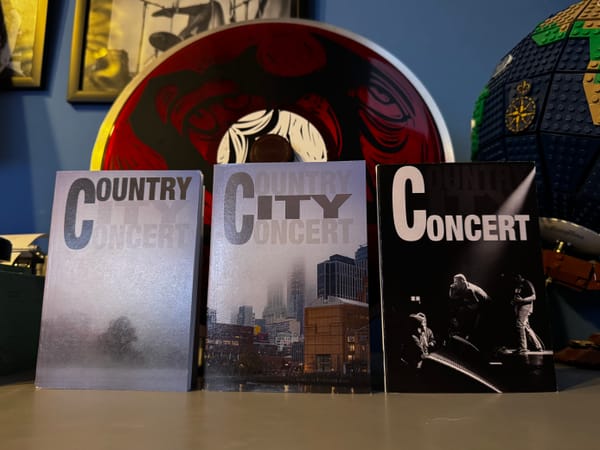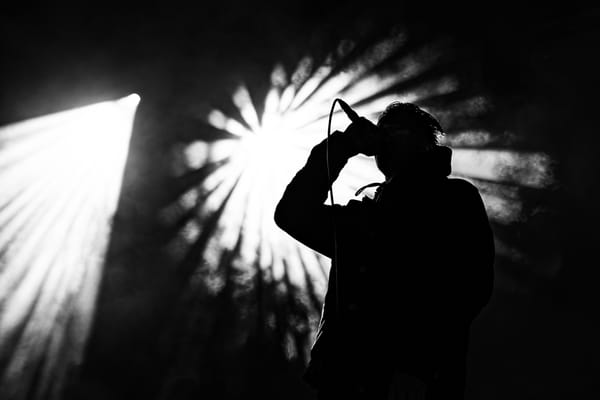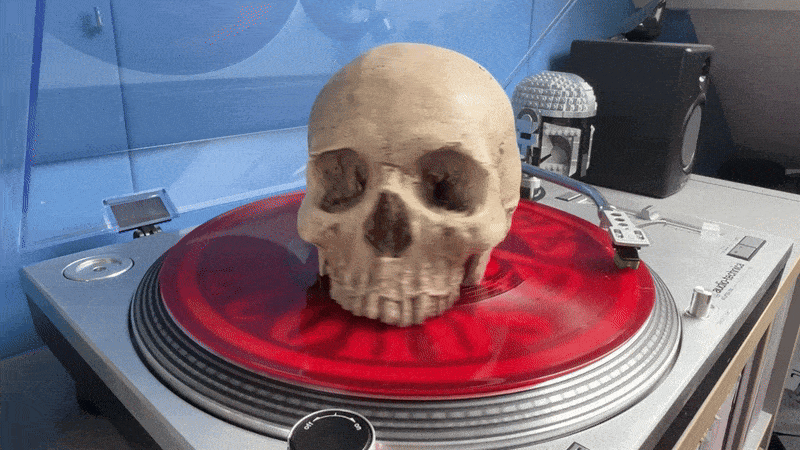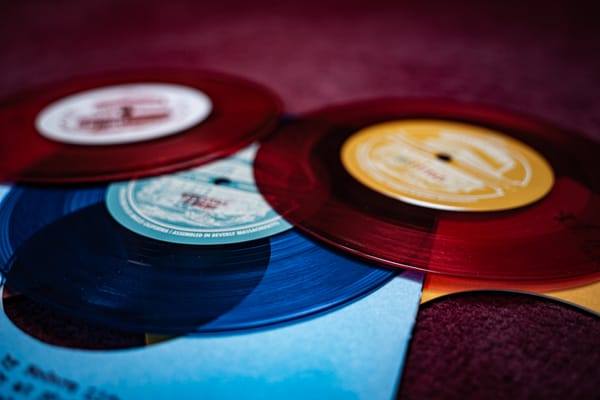A Plea for Photo Appreciation
On concert photography and flat image appreciation

Thoughts on photography as art
Any object, unperceived, is devoid of meaning. It is not until we engage with it, that something begins to mean something. Whether it’s by merely perceiving, or by interacting with it – it now has a place in our minds, in our lives.
So it is with photos. A photo being nothing more than a representation of three-dimensional light forced into flatness, whether on film or sensor. Devoid of meaning, until we look at it and engage with the shapes, the shades of light and dark and colours.
A slight detour incoming.
Personal note: photography is my great creative love. Perhaps, if you only know me from this publication – and by its nature, written words – this might seem surprising? Question mark?
But in fact, I would argue more people have seen my photography work than the words captured here (though in all honesty that’s not saying too much). Have a look, either on the well-known Instagram, or my preferred photo-based social media outlet, Glass.
The allure of photography to me is irresistible, yet a mystery to myself. In self-deprecating fashion, I could blame a certain laziness to learn how to draw or paint or how to play an instrument properly. Stereotypically, photography is nothing more than pressing the shutter button at the right time, no? Thusly, I must’ve chosen this instant-gratification medium.
However tempting as it might be to take a stab at my own accomplishments, if I were to lob that critique at at my own feet, I would also diminish the work of so many amazing photographers. Indeed, photography is an art form and a skill that, like any other, one develops with practice over time. And much like any creative person, even though I’ve been taking photos with artful intent for well over twenty years now, I’m not satisfied with where I am and always endeavour to explore new avenues of my medium.
Swerving back onto the course.
Photography is not, of course, art inherent to the medium. It is a technology we use to create art with. It is also a technology we use to capture moments or people, whether for news- or sentimental reasons, or perhaps just for practical reasons such as not wanting to forget some text somewhere or who was at a certain place at a certain time.
The beauty of photography, I would argue, is that art overlaps more often with the practical than in a lot of other mediums. A pleasing composition might reveal itself in a photo taken of a landmark or building, or the light just happens to hit right on the picture you’re taking of your friend while you’re both at lunch. These are moments when the medium opens up and shows its beauty to those not actively engaged in artful pursuit.
Artful pursuit does not create a higher level of meaning without repose, of course. As noted, any object, unperceived, is inherently devoid of meaning. As we engage with it after creation, it finally means something, however little.
And whether we know it or not, we take a lot of ourselves into this type of engagement: perhaps we recognise the people in the photo, the landscape or the buildings or their architectural styles. Perhaps we know the band pictured, or at least we recognise the genre and its energy. Based on all of these factors, we carry in our feelings and prejudices, influencing how we feel when we see a photo – and this is all before the aesthetic appreciation even starts!
So to paraphrase an overplayed mantra: art is an interaction of audience and medium.






From left to right, top to bottom: Converge (2017), Altar (2018), La Dispute (2018), Blind to Faith (2022), Dead Heat (2022), Birds in Row (2023)
Process and appreciation
Let’s move our eye to live music photography after this lengthy introduction, for it is a veritable meaning onion and has me struggling to define it.
To start at the beginning: music photography, generally, is seen in a journalistic light. By which I mean: the result is seen as record keeping, or reporting. Bands love to show off photos of themselves in action, portraying themselves in positive, or even heroic light. Concert promoters and venue owners love to show off what happened on their watch – fomenting FOMO so that perhaps you’ll join next time. Finally, audience members love a good recap of the show they’ve witnessed, not to mention wanting to share on modern social media where they have been and what they have seen.
Art generally doesn’t often come into the picture (sorry) for the audience of the photos in question at this stage. Maybe later there’ll be an exhibition, or a photo book, or a zine. Any sort of frame to shine an artistic light on this.
Which is an odd sensation, since, as a photographer, I approach this kind of work very much in an artistic way from the start.
For a lark, let’s break down how I shoot. Not the gear1, but how I approach the process.
Letting go of all expectations is important. Beginner’s Mind, as the younger Suzuki would say. There’s just no sense of how crowded it will be, how the stage is lit, how much room the band members will have to move around or even if the band is in the mood to give a good performance – "let’s just stop fantasising and live in the moment" is the creed.
Moreover, more is more. Merrily my shutter clicks, producing anywhere between 100 to 300 photos of a single band. I’ve fully embraced the digital approach and its benefits, and one of them is that you can take way more pictures with an SD card than with a roll of film, so I’m happy to waste frames on a whim. Let me put my camera in an awkward angle, it could be a great pic. If it doesn’t work out, who cares, it’s a bunch of ethereal data on a memory card.
Having said that, I’m not a 'spray and pray' type of person. One could argue that approach – just shooting as many photos as you can, seemingly at random, and sort it out later – never really pays off that well. I try to approach shots with intent, an idea behind every time I click the button. Often, the execution of that idea is impeded by the physical realities of ISO values or shutter times, or the idea itself is just bullshit. That’s fine. At least I tried to create a moment.
Intent nonetheless, meaning to capture the band’s stage presence and the audience experience in stills. A sensitive, low-key acoustic performance asks for a different approach than a hardcore punk band flying across the stage. In the end, a photo should communicate the feel of the performance, but just in a single still image2.
And here we get to the essence: what is concert photography if not a conduit for the musician’s expression? Ironically, it is my feeling a good set of photos tells me more about a band or artist than a video. For my money, most live concert registrations feel soulless and do not come close to capturing the energy in the room at the time of play.
Biased as I am, of course, I feel a good photo says much more about a performance. Perhaps it’s in our contemplation of such a slight sliver of time, captured, that we allow interpretation to enter the equation, whereas while watching a video, we simply ingest the moving images and sound 'as is' and leave it at that.
(This is admittedly a shortsighted and limited view of videography and cinematography, which are art forms in their own right. All I’m saying is that I’ve rarely seen concert footage that moved me in the same way a photo has.)
This moment of interpretation, then, allows the viewer to imbue the image with more meaning.
Beautiful!
A plea to you, dear reader, if you have made it this far already: Have a moment! Absorb it! Stare at a photo, really take it in. Don’t just glance at it, but truly look and indulge in your feelings about it.
Too many times, too many people don’t critically engage with what’s in front of their eyes. Now, more than ever, with the tools that we use to share images designed to quickly scroll or tap by as many of these as possible.
Now, more than ever, with AI-based tools that spit out less-than-mediocre facsimiles of art that count on people not taking more than a second to ingest the image.
But take a breather and look. Drink in the photo and let it pour out meaning so that you can nourish your mind and heart with it. Especially if its intent is to share another person’s art, as is the case with concert photography.
Thank you.
Though if you want to know: I usually shoot with a Sony a7 III with a Sigma f/1.7 20mm or Tamron f/ 2.8-5.6 28-200mm lens. Though since getting one, I’m also very partial to the Leica Q2 Monochrom. ↩
Now that we’ve landed on the concept of still images – isn’t it amazing how a photo can capture such tiny a sliver of time? I try to shoot at as high a shutter speed as I can manage without using a flash, which, on current gear, usually means roughly around 1/100th to 1/200th of a second, depending on lighting conditions. A hundredth of a second, such a slight moment we cannot even conceive of the length. ↩
